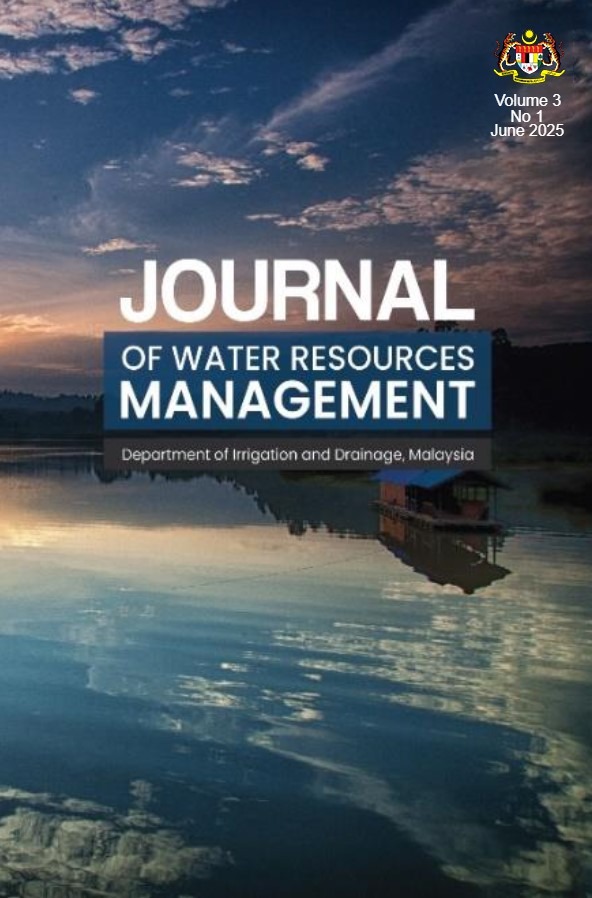Sustainable Riverbank Protection: Utilization of Coconut Coir and Vetiver Grass for Riverbank Stability with Prediction using BSTEM
Published 10-07-2025
Keywords
- riverbank stability,
- coconut coir,
- vetiver grass,
- BSTEM,
- Sungai Pusu
How to Cite
Copyright (c) 2025 Journal of Water Resources Management

This work is licensed under a Creative Commons Attribution-NonCommercial-ShareAlike 4.0 International License.
Abstract
Riverbank erosion is a natural process that can be accelerated by human activities. It can cause abruption to riverbank stability which will lead to several problems, including flooding, sediment pollution, and habitat loss. There are several ways to improve riverbank stability, including using non- structural protection methods such as the utilization of coconut coir mats and vetiver grass. In this study, one of the objectives is to identify the most suitable fibre and vegetation to be used to construct sustainable riverbank protection measures. Through the reviews of past research, the most feasible geotextile for enhancing the stability of the riverbank is the coir fibre. Coconut coir mats are made from the fibres of coconut husks. They are biodegradable and environmentally friendly. They work by providing a physical barrier that protects the soil from erosion by wind and water. They also help to improve the water retention capacity of the soil. Vetiver grass is a deep-rooted grass that is very drought tolerant. It can grow in a variety of soil conditions and is very effective at stabilizing slopes. It also helps to improve the water quality of streams and rivers. A study had been conducted to the evaluation of the performance of using Vetiver grass and coconut coir to improve riverbank stability in a selected location of Sungai Pusu that crossed within IIUM Gombak. Preliminary fieldwork was carried out to install coir mats and Vetiver grass on the selected site. This study also aims to assess riverbank stability using soil testing, riverbank profiling method, and BSTEM simulation. From the data that were collected, the riverbank profiles from all conditions were plotted from the software and generated factor of safety (Fs) values. To evaluate the accuracy, importance, and relevance of the findings, the obtained results from fieldwork set were contrasted and analysed with results from simulation set.

